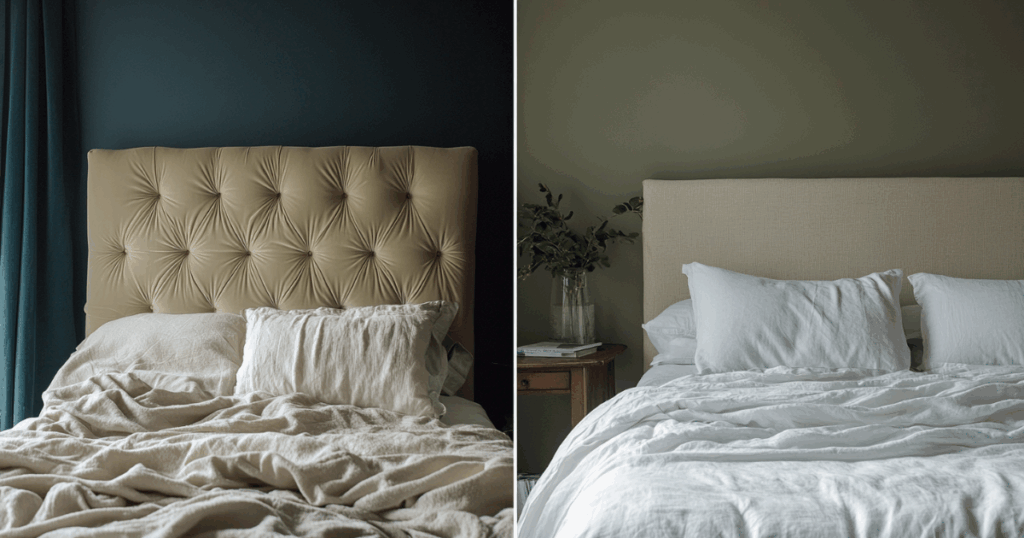7 Decor Trends That Are Officially OVER in 2025 (And What to Embrace Instead)
Table of Contents
From chunky faux leather sectionals to cookie-cutter farmhouse signs, the tides are turning in the world of interior design. What was once considered stylish now risks making your home feel dated—and fast.
Whether you’re renovating or simply refreshing your space, staying ahead of the curve can help you create a home that feels current and intentional. Designers are moving toward smarter functionality, tactile luxury, and personalized styling. Outdated furniture trends are being replaced with pieces that reflect a deeper understanding of space, comfort, and sustainable living.
In this post, we’re breaking down seven home decor trends that are officially over in 2025—and offering fresh, modern alternatives you’ll love. Backed by expert insights and real-world design applications, these swaps will help you refine your aesthetic and create a space that truly feels like home.
Let’s dive into what’s out—and what’s in.
1. Goodbye Matching Furniture Sets, Hello Collected Looks
Out: Identical bedroom or living room sets that match from top to bottom.
In: Curated, mix-and-match pieces that tell a story.
The era of buying all your furniture from one showroom set is officially over. Matching furniture sets, once seen as the gold standard for a “put-together” room, now feel rigid and uninspired.
Instead, designers are favoring collected looks—spaces that evolve organically with a thoughtful blend of textures, finishes, and styles. This approach creates depth and authenticity, especially in modern home styles that celebrate individuality.
Pro Tip: Anchor your space with one foundational piece (like a well-crafted sofa or bed), then layer in complementary items from various sources for visual interest.
2. Toss the Tufting: Simplified Upholstery Takes the Lead

Out: Overly tufted headboards, sofas, and ottomans that scream vintage excess.
In: Sleek, clean-lined upholstery with subtle stitching.
Tufted furniture had its moment, adding drama and formality to interiors. But as tastes shift toward more minimal, calming aesthetics, exaggerated tufting is being phased out in favor of simpler silhouettes.
Today’s modern home style prioritizes relaxed luxury—think cloud couches, curved sofas, and low-profile designs in natural fabrics.
Pro Tip: If you still love texture, opt for soft boucle, velvet, or linen upholstery with tone-on-tone detailing instead of deep tufting.
3. The Fall of Fast Furniture
Out: Cheap, mass-produced furniture with short lifespans.
In: Quality-over-quantity and sustainably sourced investments.
With a growing awareness of environmental impact, fast furniture is on its way out. Homeowners are moving away from throwaway pieces and toward timeless items built to last.
Not only do high-quality furnishings look better over time, but they also reduce the need for frequent replacements—saving you money and waste.
Pro Tip: Look for FSC-certified wood, recycled materials, and local craftsmanship to make more sustainable choices.
4. Minimalist to the Point of Sterility? No Thanks.
Out: All-white, overly minimal spaces that lack warmth.
In: Organic modern interiors with warmth and personality.
In recent years, minimalism evolved into a trend that left homes feeling sparse and uninviting. Now, the interior design trends of 2025 are embracing a warmer take—organic modern.
This style still keeps things simple but incorporates earthy tones, textured fabrics, and natural materials to create a soothing and livable environment.
Pro Tip: Layer jute rugs, wooden accents, woven textiles, and soft lighting to bring coziness to your modern space.
5. Ditching Faux Farmhouse Décor
Out: Overly distressed “farmhouse chic” furniture and wall art with quotes.
In: Modern rustic with authentic character and a lighter touch.
Farmhouse style, made famous by mass-market decor, is evolving. The once-beloved aesthetic—shiplap overload, faux-distressed finishes, and cliché signage—is now considered one of the most outdated furniture trends.
The 2025 update? Modern rustic—a more refined version that highlights natural textures like stone, reclaimed wood, and warm metals without being too theme-heavy.
Pro Tip: Skip the “Live Laugh Love” signs and instead focus on organic materials that age beautifully over time.
6. Bulky Recliners and Oversized Sectionals Are Out
Out: Heavy, overstuffed recliners and sectional sofas that dominate the room.
In: Streamlined seating with soft curves and flexible layouts.
In smaller or open-plan homes, furniture that swallows space is a no-go. These bulky furniture styles to avoid are being replaced by modular pieces and curved designs that are both functional and space-conscious.
Think chic swivel chairs, modular sectionals that can adapt as needed, and sofas with sculptural silhouettes.
Pro Tip: When choosing larger furniture, opt for elevated legs and curved forms to maintain visual flow and openness.
7. Statement for the Sake of It? Try Intentional Impact Instead
Out: Gimmicky statement pieces with no connection to the room’s style.
In: Thoughtful focal points that enhance your design narrative.
Not every room needs a loud peacock chair or neon sign to make an impression. In 2025, home decor mistakes often stem from injecting too many unrelated “wow” moments.
Instead, prioritize intentional statement pieces that add meaning—like a vintage armoire in a minimalist room, or a bold art piece that speaks to your personal taste.
Pro Tip: Let one or two statement items shine while the rest of the decor supports and complements the story.
In Summary: Curate, Don’t Copy
Interior design in 2025 is all about intentionality, sustainability, and personalization. The furniture trends to avoid are those that rely on repetition, overproduction, or outdated aesthetics that lack soul.
Here’s what to take away:
- Prioritize quality and sustainability over fast, disposable decor.
- Blend styles to reflect personality instead of buying cookie-cutter sets.
- Choose warmth, texture, and cohesion over stark minimalism or excessive farmhouse kitsch.
By understanding what’s falling out of favor and why, you can confidently refresh your home with timeless pieces and enduring style. The key is to evolve with your space—just like great design always does.

